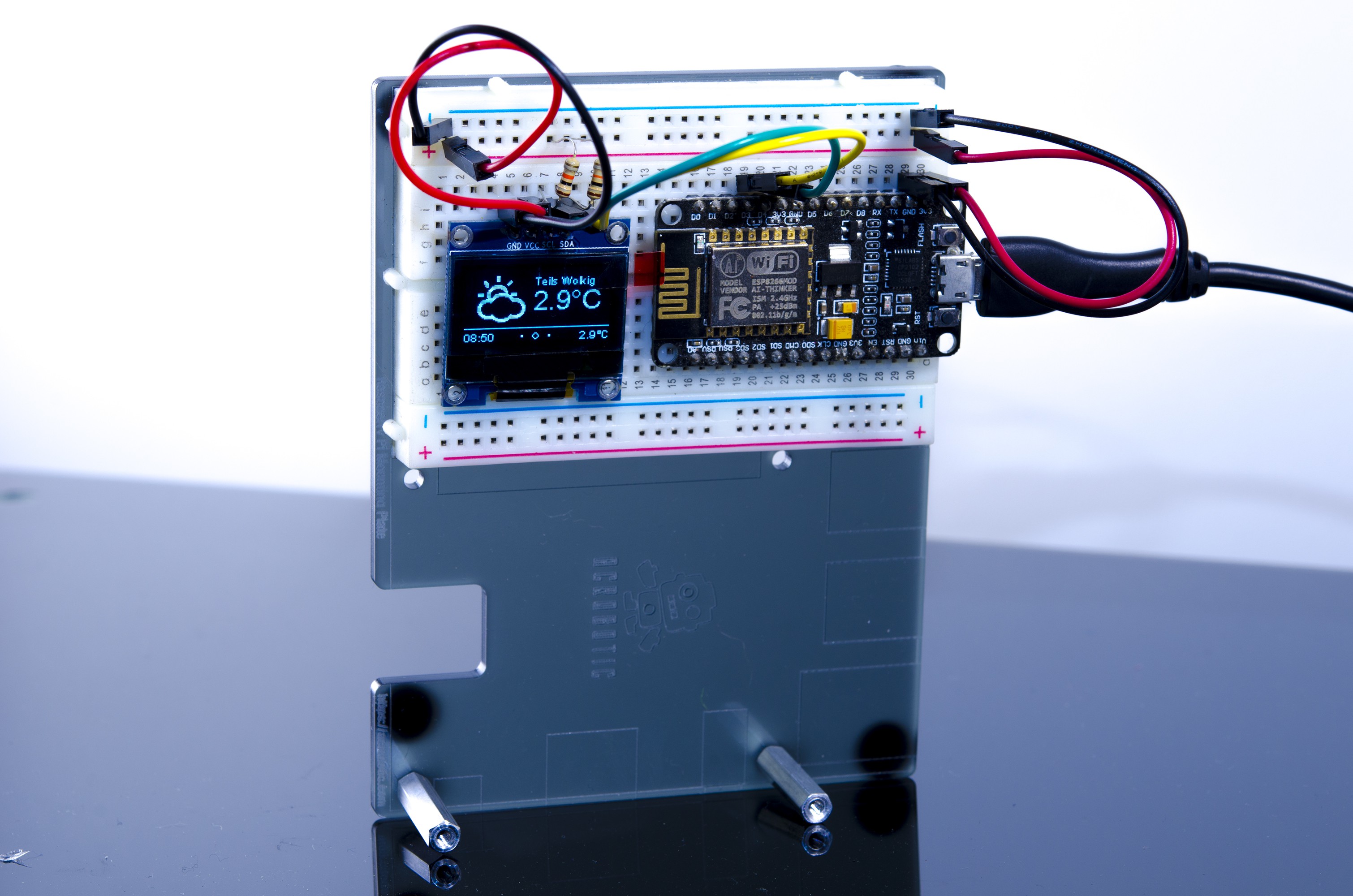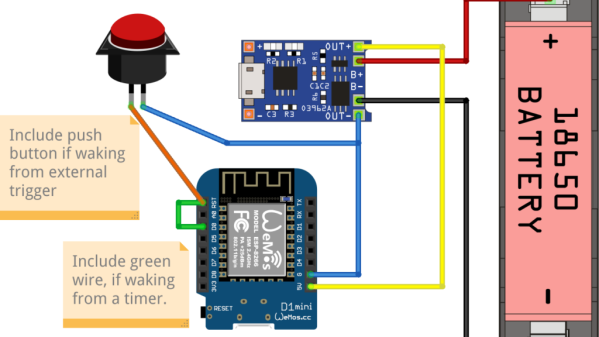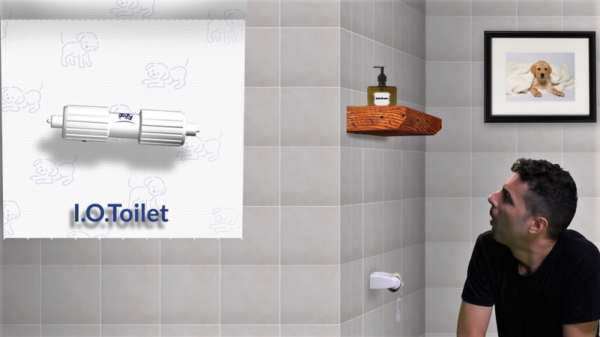Say, you’re starting your electronics journey with a few projects in mind. You have an ESP8266 board like the Wemos D1, a Li-Ion battery, you want to build a small battery-powered sensor that wakes up every few minutes to do something, and you don’t want to delve into hardware too much for now. Well then, does [Mads Chr. Olesen] have a tutorial for you! Here, you’ll learn the quick and easy way to get your sensor up and running, learn a few tricks for doing sleep Arduino environment, and even calculate how long your specific battery could last. Continue reading “Battery-Powered ESP8266 Sensor? Never Been Simpler”
wemos mini d14 Articles
Checking The Weather Without A Window
Making a weather display is great because it’s a simple project that shows off some skills and has an obvious daily use. So [ACROBOTIC Industries] decided to make an easy kit for the Hackaday Prize to make weather displays even more accessible.
Calling it the ESPecter, [ACROBOTIC Industries] wanted to make this a simple project for anyone, regardless of skill with a soldering iron or Arduino toolkit. So they decided to base the guts on common components that can be put together easily, specifically a Wemos Mini D1 with an OLED shield as a bright display. They also designed a cool tiltable 3D-printed enclosure for this small device so that you can orient it to your eye level.

While they already have a breadboarded prototype, and a 3D printed case, some software work remains to make the project really shine. They plan to add nice features like a web interface to configure location and network information, alerts, additional locations, and historical weather data. They also want to create a weather library to display well on a low-resolution screen and add battery operation.
We look forward to seeing the final version later in the Hackaday Prize!
This isn’t the first weather project we’ve seen around here. Other variants include mirror weather displays, an ESP8266-based weather monitoring station, a very low-power weather station, and this roundup of weather displays which might give you some inspiration.
IoTP: The Internet Of Toilet Paper
Our first impression of this IoT toilet paper roll was that somebody was pulling our leg. Watching the infomercial-esque video below is alternately hilarious and horrifying, but it leaves you with the unmistakable feeling that this is all a joke, and a pretty good one at that. Right up until you get to the big Kimberly-Clark logo at the end, that is, and you realize that the international paper concern must be looking at this seriously.
When you read [zvizvi]’s Instructables post, you find out that this project is indeed a legitimate attempt to meld an Amazon Dash button with your toilet paper dispenser. For his proof-of-concept build, [zvizvi] started with a gag “talking TP” roll off eBay, designed to play back a voice clip when the paper is used. It had all the right guts, and being just the size for a Wemos Mini and an accelerometer for motion detection was a bonus. The smart spindle can tally the amount of paper used, so you’ll never be caught without a square to spare. And of course, critical TP usage parameters are uploaded to a cloud server, so that more toilet paper can be rushed to your door when you’re getting low.
The whole idea, including justification based on monitoring TP use as a proxy for bowel health, seems ridiculous, but we suspect there may be some brilliance here. Joke if you will, but in the end it’s probably better than an Internet of Farts.
Hackers Vs. Mold: Building A Humidistat Fan
Having a mold problem in your home is terrible, especially if you have an allergy to it. It can be toxic, aggravate asthma, and damage your possessions. But let’s be honest, before you even get to those listed issues, having mold where you live feels disgusting.
You can clean it with the regular use of unpleasant chemicals like bleach, although only with limited effectiveness. So I was not particularly happy to discover mold growing on the kitchen wall, and decided to do science at it. Happily, I managed to fix my mold problems with a little bit of hacker ingenuity.
Continue reading “Hackers Vs. Mold: Building A Humidistat Fan”


















